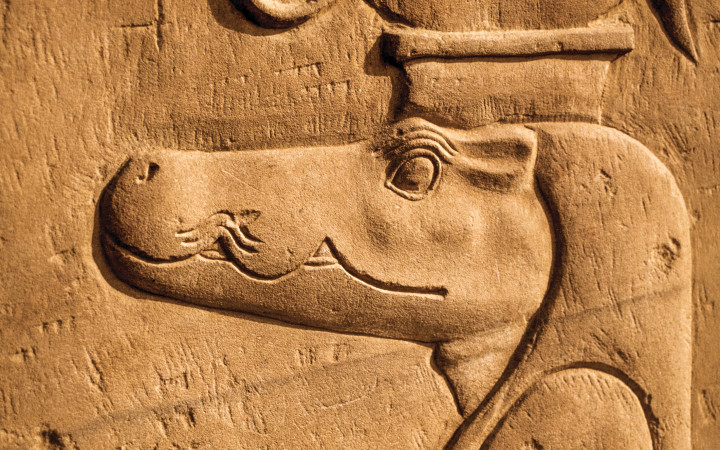Today’s Wonder of the Day was inspired by Anuja. Anuja Wonders, “Was the Egyptian Sobek real?” Thanks for WONDERing with us, Anuja!
Do you dream of seeing King Tut’s tomb? How about Cleopatra’s palace? If you’re thrilled by ancient Egypt, then today’s Wonder of the Day is right up your alley. We’re learning about Sobekneferu!
Who was Sobekneferu? She was the first woman to become pharaoh of Egypt. You may have also seen her name written as Sebeknefru. Some call her Neferusobek. Many others know her simply as the Crocodile Queen of Egypt.
Why is she called the Crocodile Queen? The first part of her name (Sobek) is the same as the Egyptian crocodile god. The rest of her name (Nefuru) means “beauty.” If you put the two together, her name meant beautiful crocodile. Like many other kings and queens, Egyptian pharaohs chose the name they would rule under. Sobekneferu likely picked her name because of the importance of crocodiles in Egyptian culture.
Sobek was a highly revered god. Egyptians believed he controlled water. Egypt grew, in large part, thanks to the Nile River, so pleasing the crocodile god was very important. The actual crocodiles who lived in the Nile were also respected. Some Egyptians even kept these animals as pets.
Sobekneferu ruled Egypt for about four years. It’s thought that both her father and brother were pharaoh before her. She was the last ruler of the 12th Dynasty.
Beyond that, we don’t know much about the Crocodile Queen. In fact, scholars didn’t know about her at all until the 19th century. Her name was first found in the Turin Canon. This document listed the names of 223 pharaohs. Due to damage, only 126 names can be read today.
Experts think Sobekneferu may have overseen the building of a pyramid in Mazghuna. There are also signs that she was seen as divine by rulers of the 13th Dynasty. However, today’s scholars are unsure of her final resting place.
At the Louvre, visitors can see the remains of one statue of the Crocodile Queen. It contains only her torso. Still, it can tell us a lot about Sobekneferu.
For example, the statue shows the Crocodile Queen as feminine. This is different from most other female pharaohs (except for Cleopatra VII). Their statues and drawings emphasized masculine traits. This was likely meant to link them with the male rulers of Egypt. However, this statue hints that the first female pharaoh embraced her femininity.
Today, many things about the Crocodile Queen are still a mystery. Of course, that’s true of many ancient pharaohs. What questions would you most like to have answered? If this Wonder of the Day has you curious, spend some more time learning about ancient Egypt today!
Standards: C3.D2.His.2, CCRA.R.4, CCRA.R.1, CCRA.R.2, CCRA.R.10, CCRA.SL.1, CCRA.SL.2, CCRA.L.3, CCRA.L.6, CCRA.W.2, CCRA.W.4, CCRA.W.7, CCRA.W.8, CCRA.W.9, CCRA.L.1, CCRA.L.2




